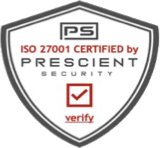Since 2016, the legal technology Clio has released annual Legal Trends Reports that summarize the latest advancements in legal entity management. The 2023 Legal Trends Report was recently published, and in the report, they’ve highlighted several key trends that are shaping the evolution of legal entity management.
If there’s one common theme throughout the report, it’s that successful legal talent consistently adopts a client-first approach. This means successful legal managers adapt their processes and update their workflows as new innovative solutions emerge. Modern technology allows for more flexible client-facing legal services, and successful practitioners embrace flexibility to improve client satisfaction.
Here’s a breakdown of the biggest takeaways from the 2023 Legal Trends Report.
Report methodology
The Clio team conducted two principal surveys to craft their report. The first survey was administered to 1,446 legal practitioners in the United States between May 31, 2023 and July 20, 2023. Participants included practicing legal professionals, as well as legal support staff like paralegals, law clerks, and office administrators who help run the day-to-day interests of a firm.
The second survey focused on the interests of the general public. 1,012 participants from across the United States were surveyed between June 13, 2023 and June 22, 2023. The survey’s purpose was to gather opinions from the general public about the legal profession. Many participants had hired a lawyer or retained the services of a firm in the past.
Productivity and Legal Recurring Revenue reach new highs
Productivity within the legal industry has significantly improved compared to workflows in 2016. The average legal professional works 25% more cases today compared to seven years ago, and they also record 35% more billable hours.
Improved administrative efficiencies have helped professionals collect more revenue for every hour of legal work. Billable hours and collected revenue have risen over two and a half times compared to 2016 numbers. As a result, Legal Recurring Revenue for legal practices is improving in response to more efficient workflows.
The cost of inflation impacts billable hourly rates
While Legal Recurring Revenue is improving for most firms, individual billable hourly rates are not rising at equal rates. Practicing attorneys have seen their hourly rates rise by 28% since 2016, increasing from $256 per hour up to $327 per hour in August 2023. However, billable hours charged by paralegals have only risen by 19%, rising from $150 to $178 over seven years.
The cost of legal services for clients has risen over the years, adjusting for inflation year over year. But over the past two years, global inflation has spiked to levels not seen since the 1980s. Mindful of the inflationary impact on clients, legal practices appear to be cutting or controlling some of the costs invoiced to clients. It appears that billable hours charged by paralegals are mostly being squeezed by inflationary pressure.
Improved utilization rates elevate invoiced billable hours
In the legal industry, a utilization rate measures how much of a legal practitioner’s eight-hour workday is put towards billable hours for clients. Since legal talent is working 25% more cases and invoicing 35% more billable hours to clients, improved productivity suggests utilization rates are improving.
And the data supports that estimate. In 2016, the average legal utilization rate was 28%. In 2023, that number has improved to 37%, marking a 32% increase in time that’s invoiced as billable hours to clients. If the numbers are broken down, this amounts to an average of three-quarters of an hour of billable time added to daily workloads.
Realization rates are steadily growing but there’s still room to improve
Realization rates determine how much of the time that a firm puts into a particular case ends up invoiced to clients. In 2016, the average firm realization rate was 77%. In 2023, that rate has jumped up to 86%.
While this is a remarkable improvement, the outstanding 14% can still be fully realized. Firms can utilize more modern technology to help bridge the remaining gap in actual rendered work and work that’s invoiced to clients. Automated billing systems produce more transparent invoices sent to clients, while efficient entity management systems can reduce the time that legal talent spends on non-client-facing work.
Entity management systems are law firm efficiency solutions
To help reduce the time and energy that legal talent spends on non-client-facing work, your legal practice needs to utilize modern technology. There’s no better time-efficient solution for legal practitioners than entity management systems like MinuteBox.
Entity management software is an example of cloud-based technology built by legal professionals to help legal professionals. The primary purpose of entity management software is to streamline workflows when creating diligent minute book records for clients.
Legal talent can reduce the time they spend filing, sorting, and managing minute book records. As a result, they can channel more time and energy into client-facing work and further increase billable hours.
Since entity management software is cloud-based, it’s also more efficient and convenient for clients. All minute book records can be accessed from anywhere in the world, enabling client meetings about the records to be conducted at the client’s time. It’s faster and more flexible, and it’s proven to improve client satisfaction rates — increasing the potential for repeat business.
Eager to increase billable hours invoiced by your firm and further augment Legal Recurring Revenue? Join the MinuteBox revolution today and introduce more time-efficient workflows to help your legal team maximize revenue opportunities.


